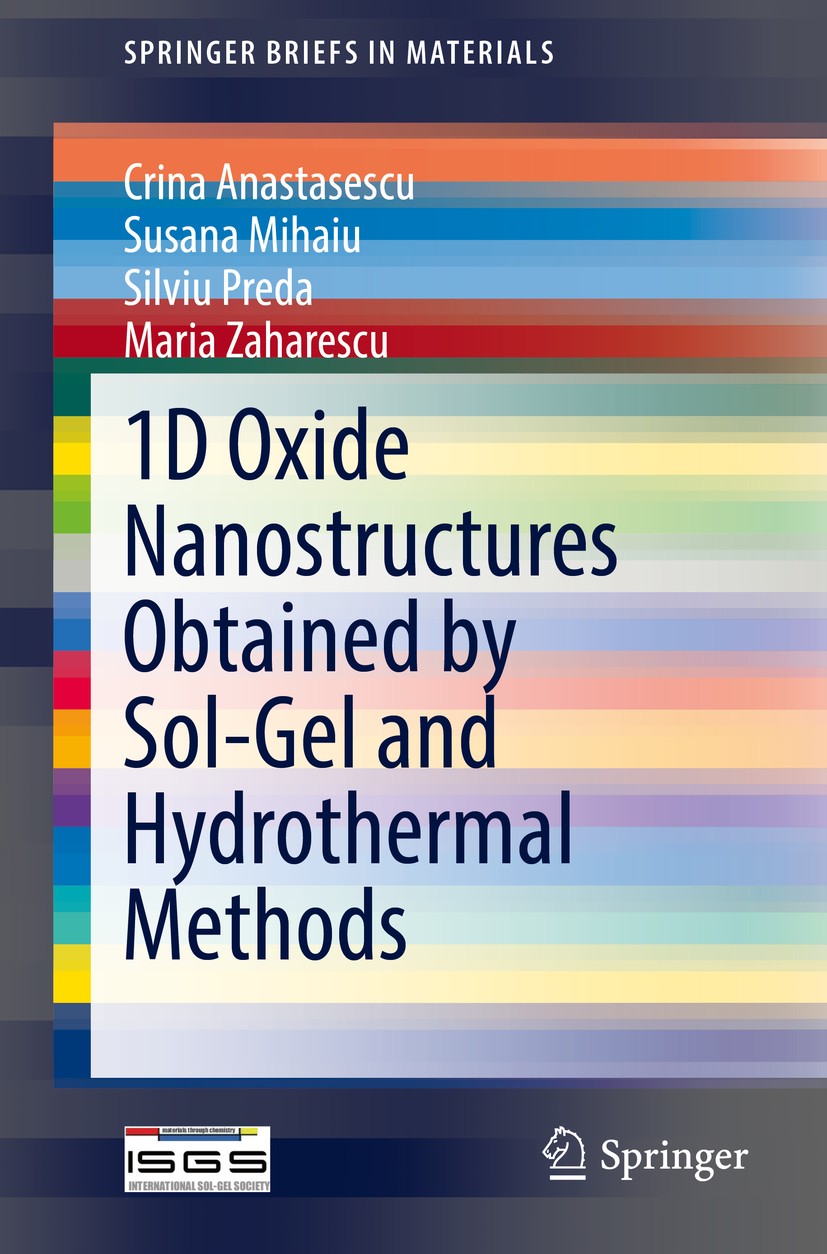| 期刊全称 | 1D Oxide Nanostructures Obtained by Sol-Gel and Hydrothermal Methods | | 影响因子2023 | Crina Anastasescu,Susana Mihaiu,Maria Zaharescu | | 视频video | http://file.papertrans.cn/101/100413/100413.mp4 | | 发行地址 | Presents efficient and versatile techniques (the sol-gel and hydrothermal methods) that are widely used in oxide materials synthesis.Represents an interdisciplinary approach to 1D nanomaterials synthe | | 学科分类 | SpringerBriefs in Materials | | 图书封面 |  | | 影响因子 | .This book presents wet chemical sol-gel and hydrothermal methods for 1D oxide nanostructure preparation. These methods represent an attractive route to multifunctional nanomaterials synthesis, as they are versatile, inexpensive and, thus, appropriate for obtaining a wide range of oxide materials with tailored morphology and properties. Three specific oxides (SiO2, TiO2, ZnO) are discussed in detail in order to illustrate the principle of the sol-gel and hydrothermal preparation of 1D oxide nanostructures. Other oxides synthesized via this method are also briefly presented. .Throughout the book, the correlation between the tubular structure and the physico-chemical properties of these materials is highlighted. 1D oxide nanostructures exhibit interesting optical and electrical properties, due to their confined morphology. In addition, a well-defined geometry can be associated with chemically active species. For example, the pure SiO2 nanotubes presented a slight photocatalytic activity, while the Pt-doped SiO2 tubular materials act as microreactors in catalytic reactions. In the case of titania and titanate nanotubes, large specific surface area and pore volume, ion-exchange ability | | Pindex | Book 2016 |
The information of publication is updating

|
|
 |Archiver|手机版|小黑屋|
派博传思国际
( 京公网安备110108008328)
GMT+8, 2025-11-12 10:23
|Archiver|手机版|小黑屋|
派博传思国际
( 京公网安备110108008328)
GMT+8, 2025-11-12 10:23


